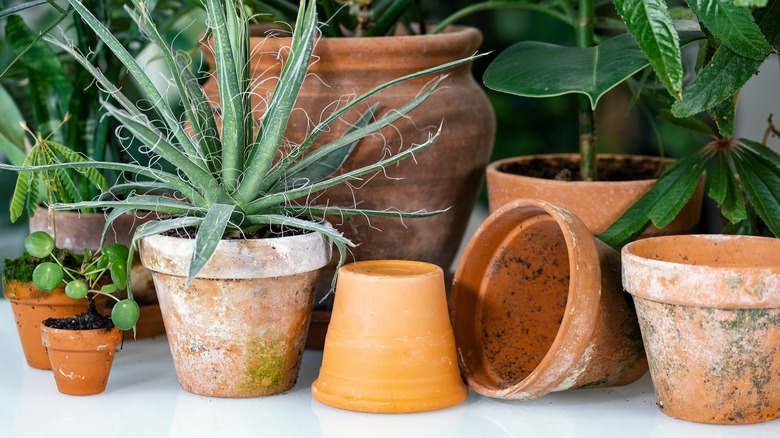Should You Soak Your Clay Pots Before Using Them?
Terracotta and clay pots are popular for planting for a good reason. Their porous nature allows air and water to permeate, reducing a plant's root rot risk. However, there's debate over whether or not these pots should be soaked before use. Some experts argue that soaking is unnecessary, as any moisture the clay might retain will evaporate quickly in less time than it would take for the plant to deplete its water stores. However, proponents of soaking emphasize that this initial treatment prevents the pots from drawing moisture away from the soil, which could otherwise lead to drier conditions that may stress the plant's root system.
Beyond water retention issues, soaking clay pots has other benefits. This process can cleanse the pots, removing any residual dirt or debris clinging to the surface. This is particularly useful for pots that have been stored for an extended period or were bought second-hand. Furthermore, pre-soaking can reduce the risk of the pot cracking when filled with soil and water, as the clay expands when wet and contracts as it dries.
How to soak your clay pots
Choosing to soak your clay pots before planting can be beneficial for several reasons, including better moisture retention in the soil and a reduced likelihood of the pots cracking. You can easily soak them in a few easy steps. First, find a sink or bucket large enough to submerge your clay pots completely. Fill it with clean water. Next, gently place your pots in the water, fully submerging them to allow for even soaking. The duration you should leave the pots soaking varies. While it's advisable to let them soak for a minimum of 30 minutes, leaving them immersed overnight can be even more beneficial if your schedule permits.
Soaking is also a cleaning mechanism, eliminating accumulated grime and particulates that could negatively impact plant wellness. Additionally, many experts report that pots that have been pre-soaked provide a more convenient experience during transplanting because the pots remain moist, preventing them from absorbing water away from the plant roots when soil and plants are introduced and subsequently watered.
